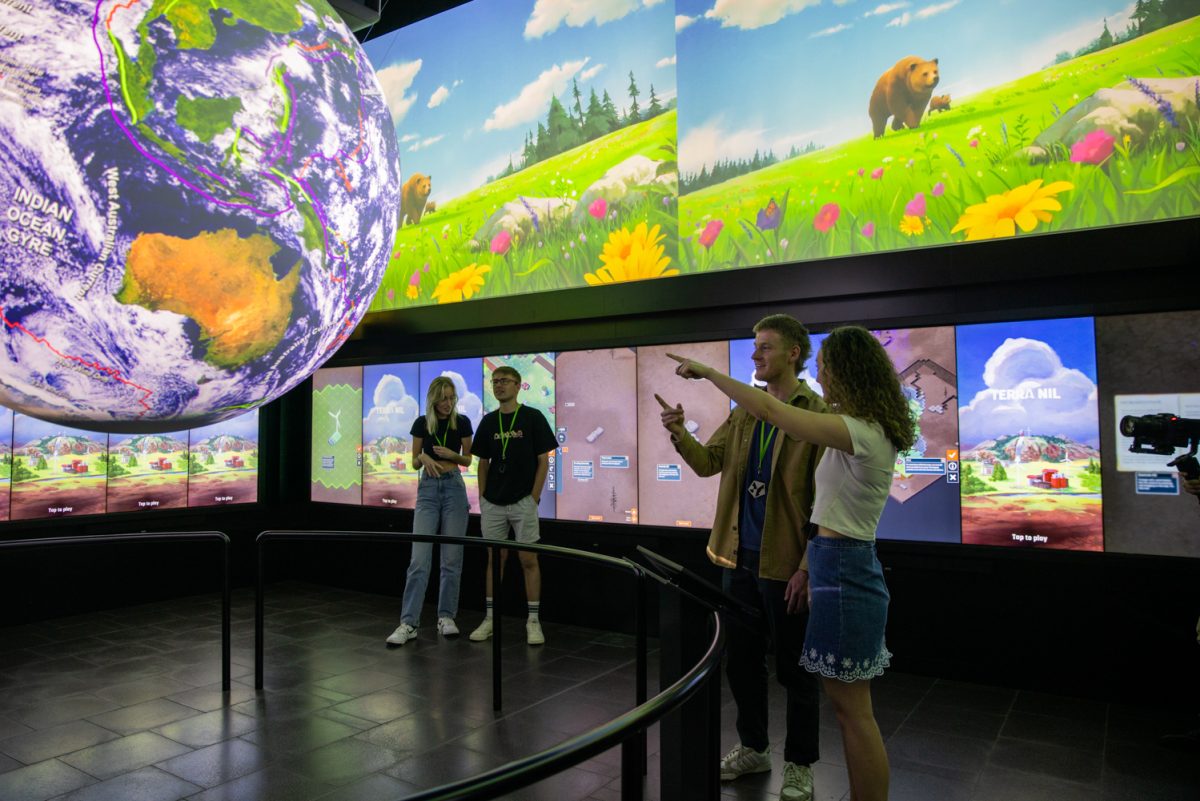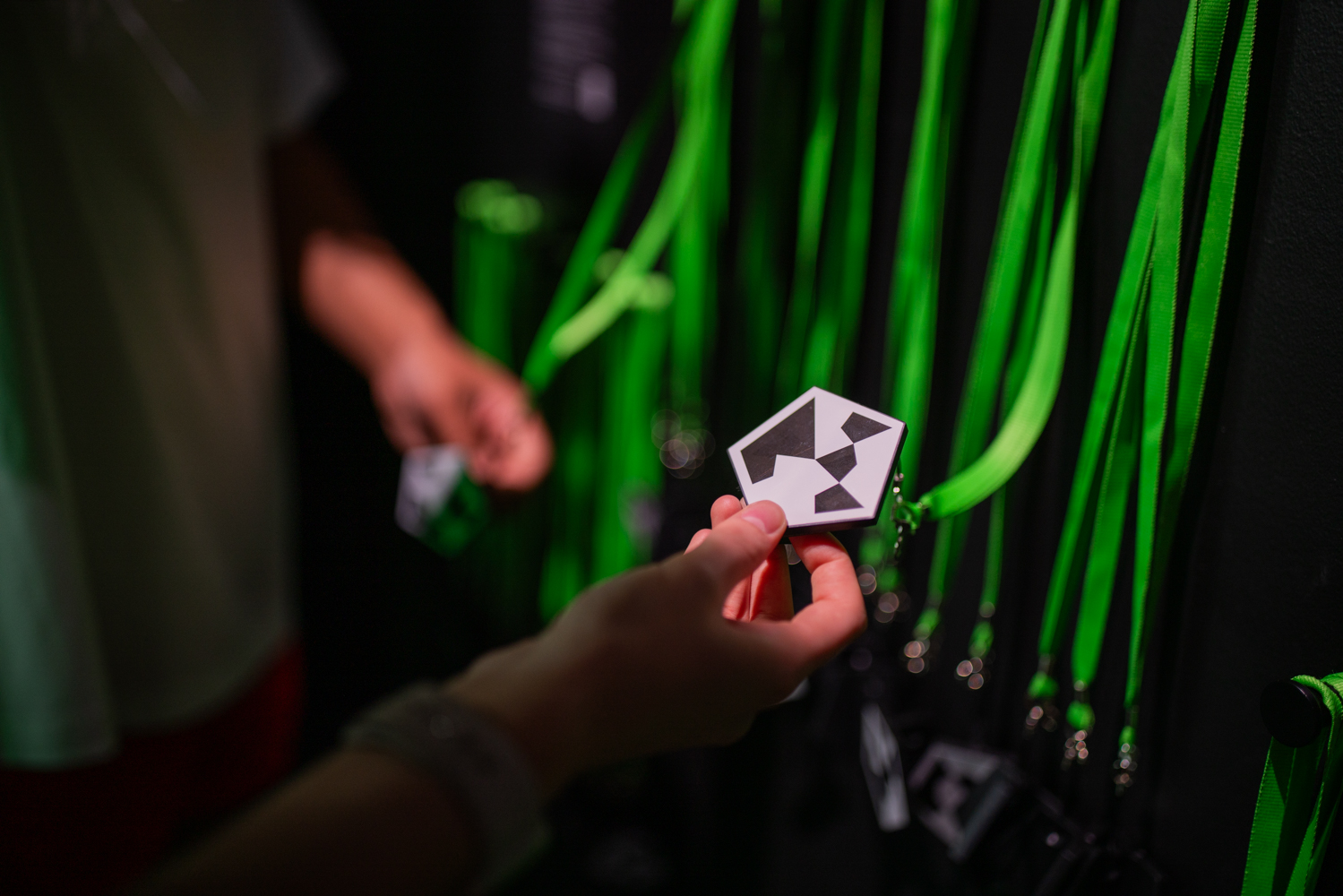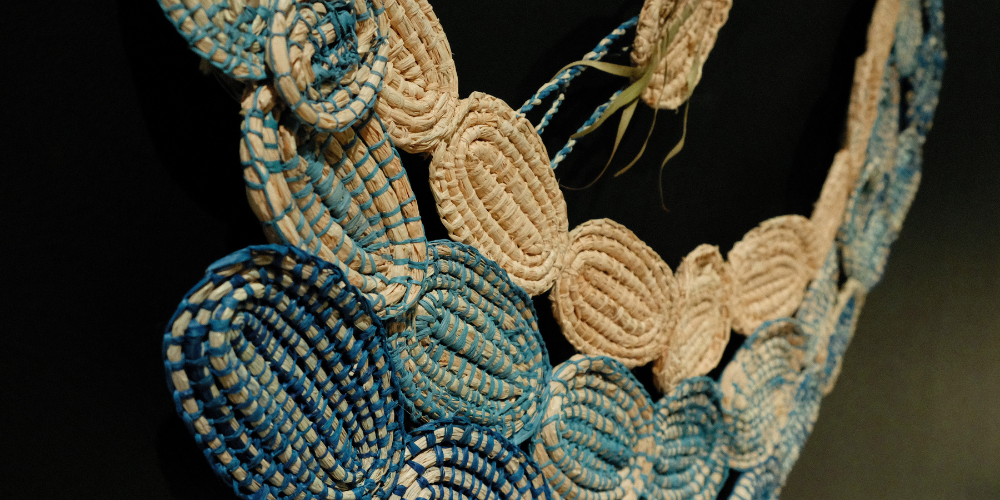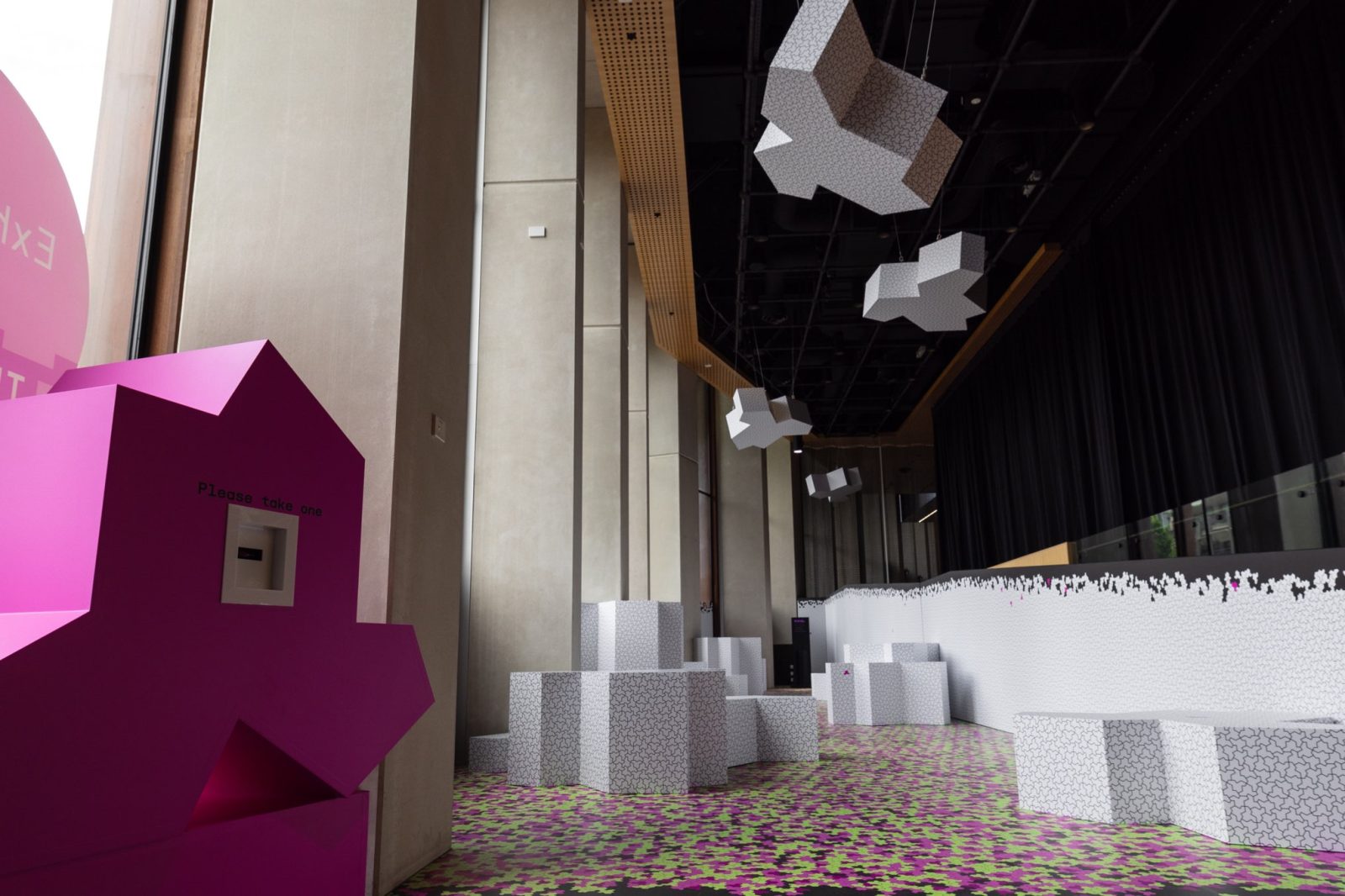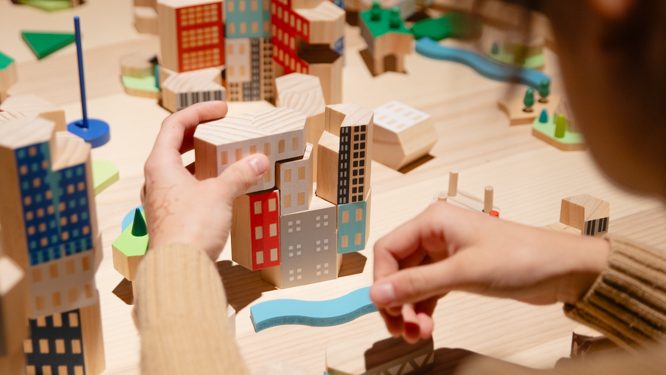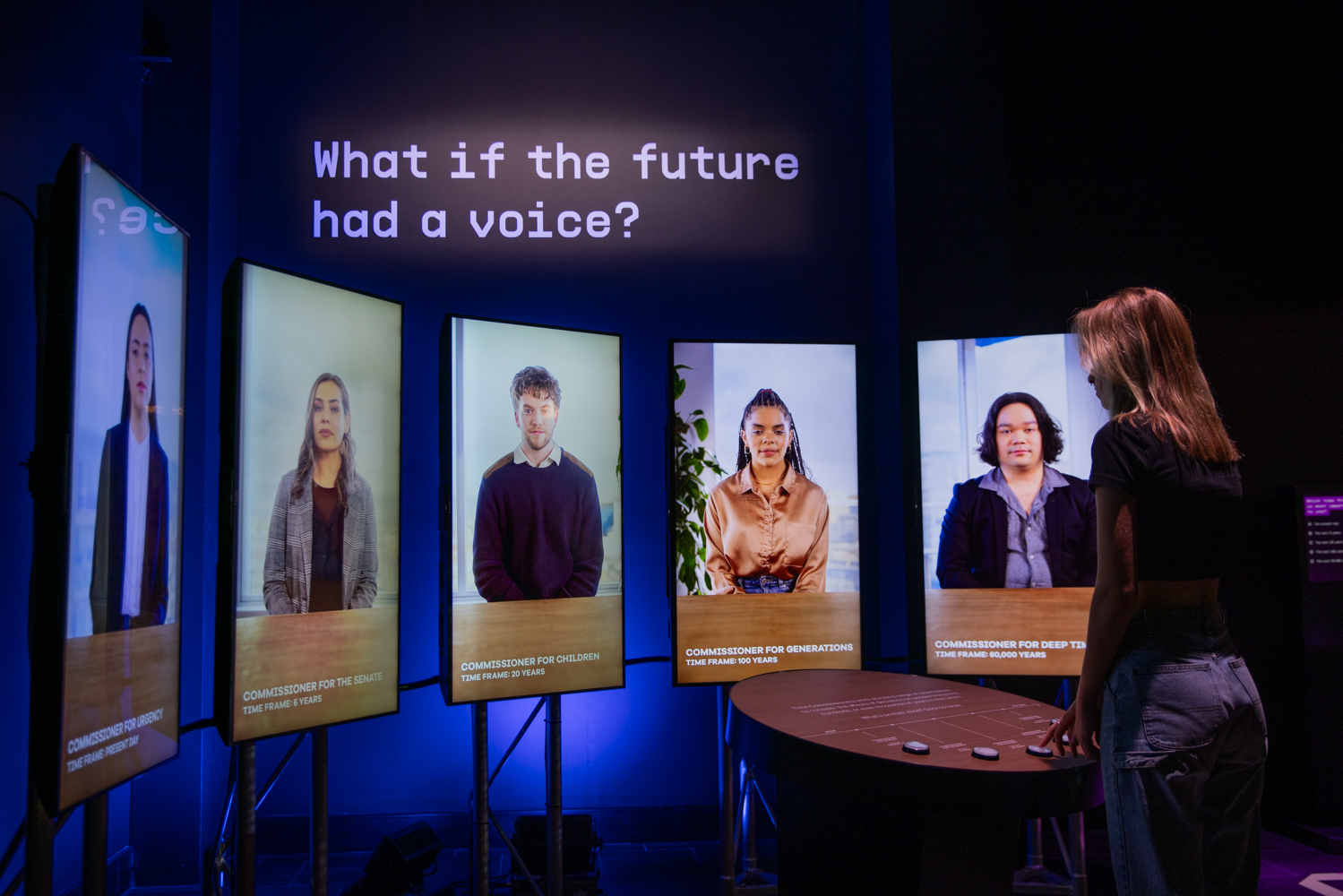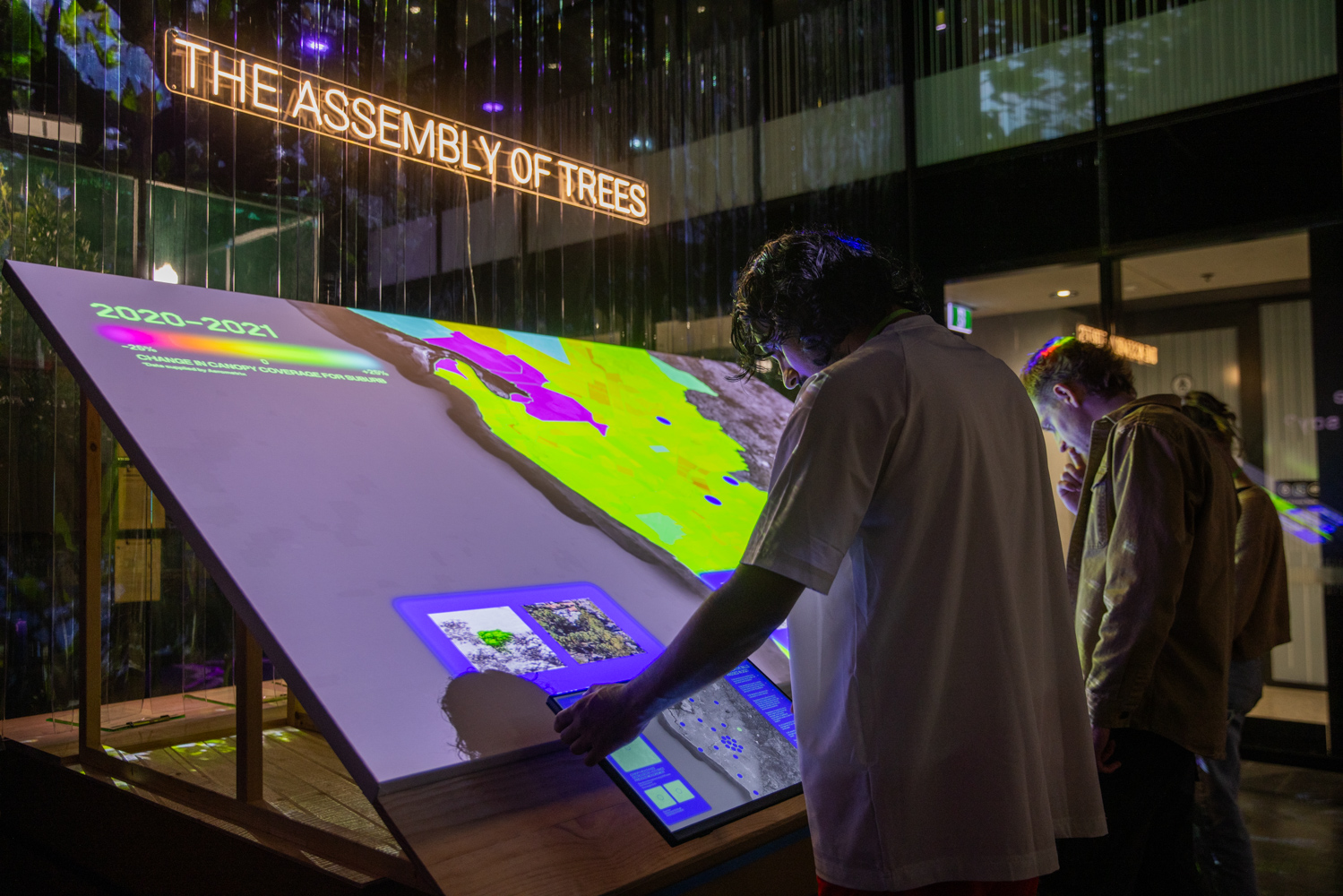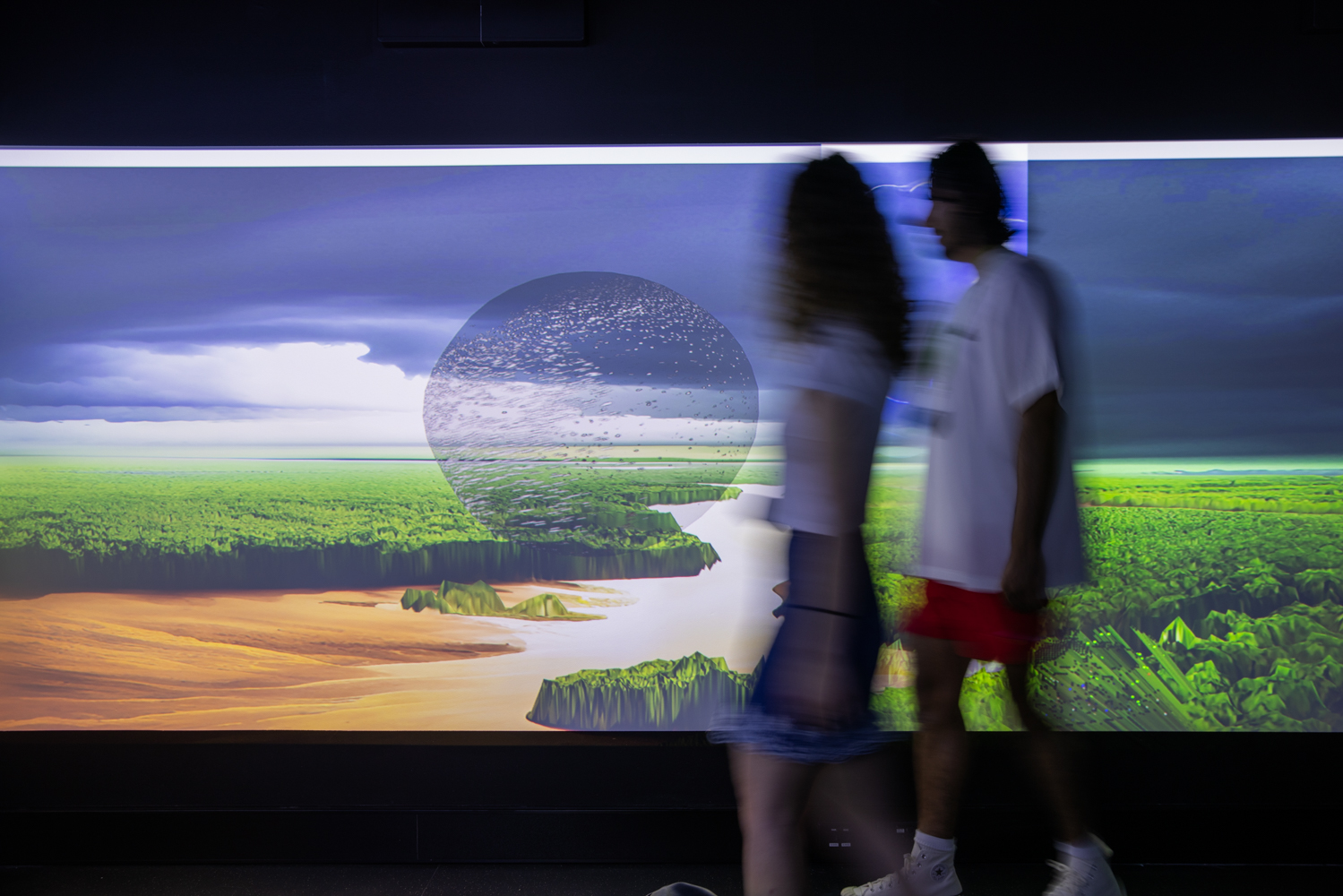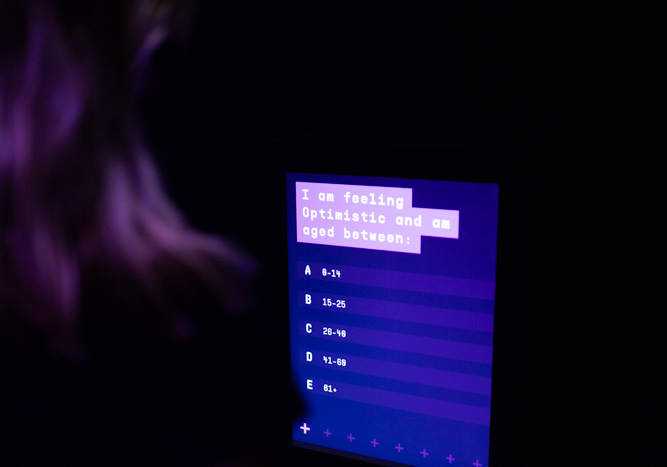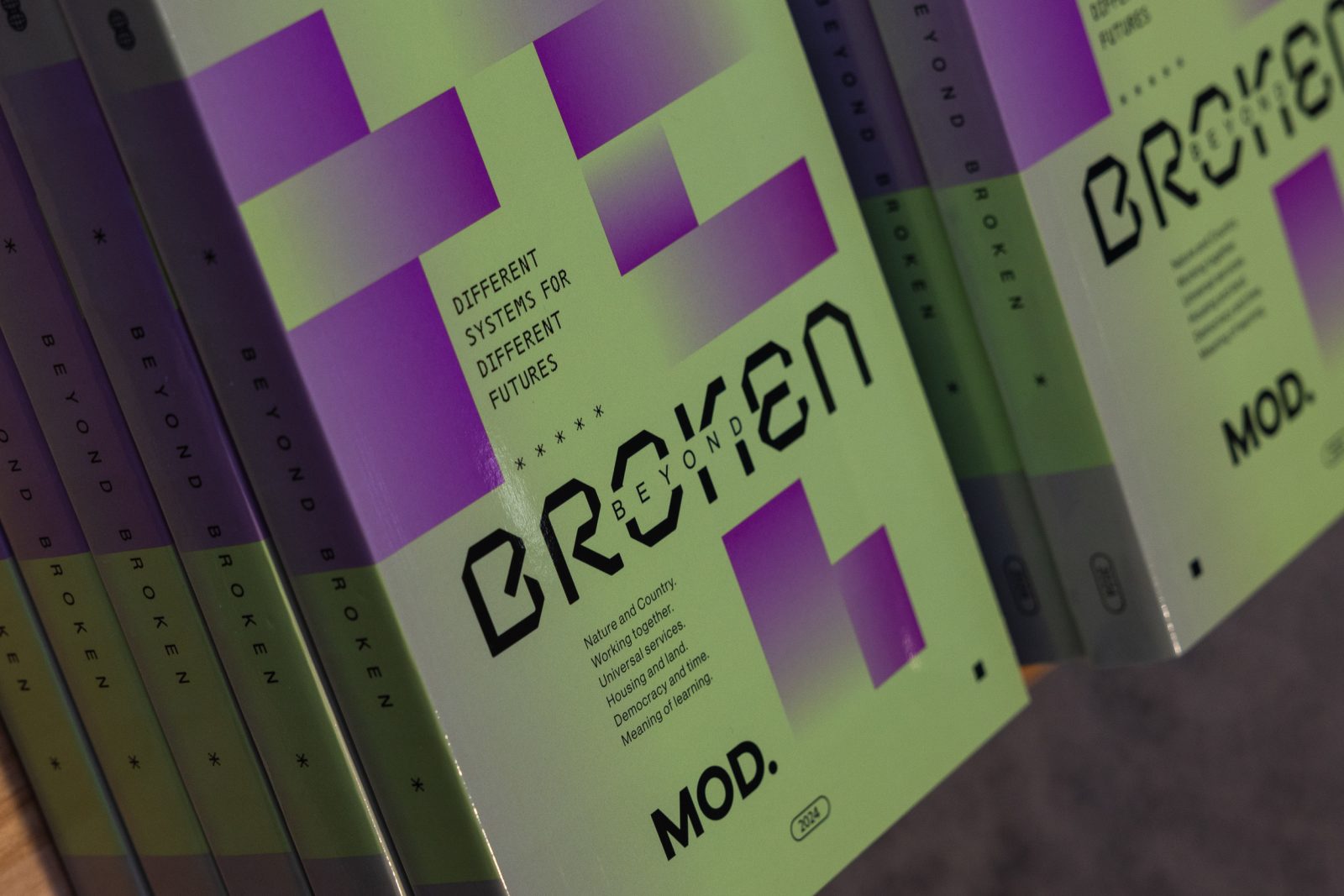Interested in putting nature first?
Make it a career with UniSA

Exhibit Details
Open JanNov 2024
- What if we put nature first?
- Kuri Kurru (Turning Circle)
- Terra Nil
- Science on a Sphere
- Delve Deeper
Prioritising the health of the environment, of Country, is not something that often we see in urban design. Cities are designed for people and for cars. Let’s consider how things might be different. Enter a space where nature is restored rather than exploited.
Explore interactive seasonal stories told by Story Teller and Artist Karl ‘Winda’ Telfer from the Mullawirra Meyunna, who will take you on a journey in preparation for each Kaurna season in Kuri Kurru.
Check out our Science on a Sphere and investigate the four categories of datasets related to the BROKEN exhibition: Nature, Humans, Animals, and Climate.
Play Terra Nil, a strategy game where you enable ecosystem reconstruction. Piece by piece, you will turn a barren wasteland into an ecological paradise. Scrub the soil of toxins, create rivers, and foster biomes of wetlands, wildflower meadows and forests. What happens when you restore nature and put its needs first?
Explore interactive seasonal stories told by Story Teller and Artist Karl ‘Winda’ Telfer from the Mullawirra Meyunna, who will take you on a journey in preparation for each Kaurna season.
Kuri Kurru (Turning Circle) our Kaurna seasonal touchscreens was awarded WINNER of Permanent Exhibition or Gallery Fitout at Museum and Galleries National Awards (MAGNA) at the Australian Museums and Galleries Association (AMaGA) 2022 Conference.
“An innovative, accessible and powerful multimedia interactive. Kuri Kurru (Turning Circle) is a beautiful and evocative installation which beautifully connects visitors with Indigenous Knowledge via engaging and immersive technology.”
-
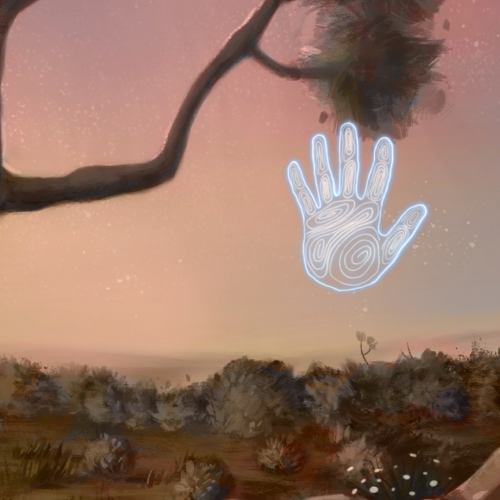
Bokarra
The season between January and February
A time when the heat on the land becomes dry and the hot northerly winds begin. This is a time of tribal gatherings and ceremonial cultural practice.
The Kuri Palti would be called by the Mullawirra Meyunna – the Dry Forest People. They would bring many tribal family clans together in the peace lore of country, ceremony and cultural practice.
In this interactive seasonal story, Story Teller and Artist Karl ‘Winda’ Telfer from the Mullawirra Meyunna, will take you on a journey in preparation for the Kaurna Meyunna season of Bokarra, the season between January and February.
-
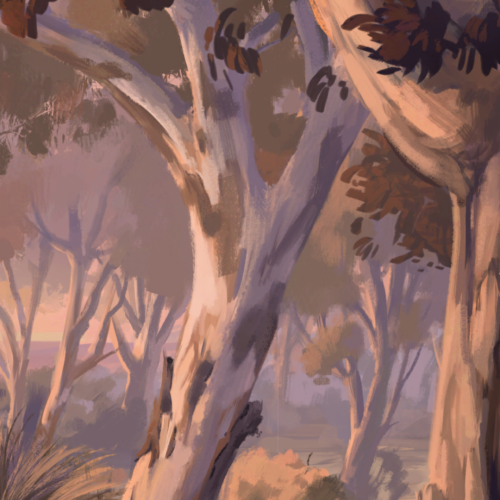
Parnatti
the season between March and April
“All biological living organisms are interconnected and each rely on each other and Kaurna cultural learnings as they go through the cycle of birth/life/death and rebirth. Parnatti is followed through the stars where a certain star acts as the convener of what is coming as it rises and falls.”
In this interactive seasonal story, Story Teller and Artist Karl ‘Winda’ Telfer from the Mullawirra Meyunna – the Dry Forest people, will take you on a journey in preparation for the Kaurna Meyunna season of Parnatti, the season between March and April.
-
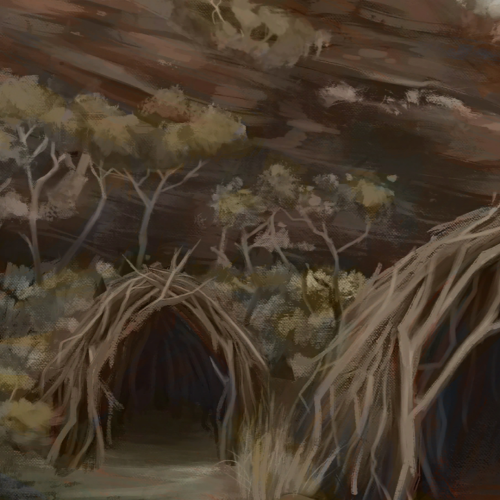
Wodliworngatti
The season between May and June
It is time of building sturdy wind and water proof shelters (wodlis) out of large branches from fallen trees for the coming of the wet and cold. A community of shelters were built to provide warmth and protection from the icy cold South West winds that begin to blow.
In this interactive seasonal story, Story Teller and Artist Karl ‘Winda’ Telfer from the Mullawirra Meyunna – the Dry Forest people, will take you on a journey in preparation for the Kaurna Meyunna season of Wodliworngatti, the season between May and June.
-
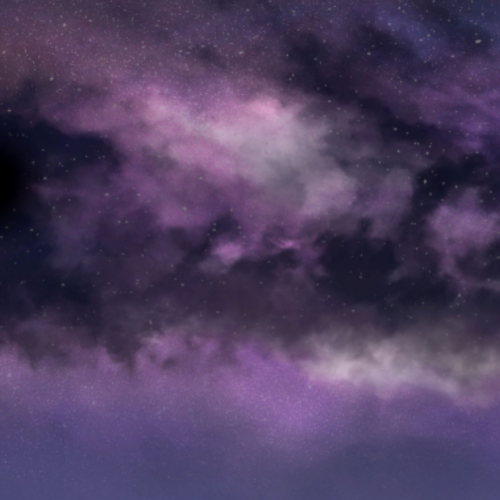
Kudlilla
The season between July and August
“Ngai Icharlee – My friends, do you see what sits within my song? Purle, my Spirit, my ancestors, my story of place, my dreaming. See my light, see my heart, you are light too, touch and see. Journey with me my friends and I will share light, heart and spirit of this place.”
Purle Munaintya, meaning “star lore” in the language of the Kaurna Meyunna of the Adelaide Plains, is an interactive touchscreen story that will take you on a journey during the Kaurna Meyunna season of Kudlilla, the wet season between July and August.
-

Willuti
The season between September and October
“All biological living organisms are connected and each rely on each other and tribal cultural learnings as they go through the cycle of birth/life/death and rebirth.”
In this interactive seasonal story, Story Teller and Artist Karl ‘Winda’ Telfer from the Mullawirra Meyunna – the Dry Forest people, will take you on a journey in preparation for the Kaurna Meyunna season of Willutti, the season between September and October.
-
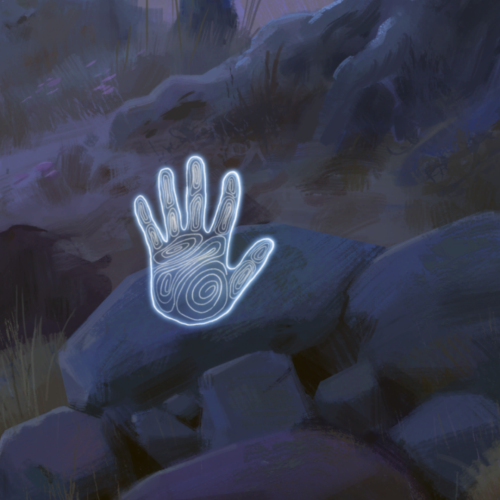
Woltatti
The season between November and December
“Fire is lore for country. Wisdom of the fire was carried by few people in the tribal clans… Woltatti is a star which initiates the time of this cultural practice.”
In this interactive seasonal story, Story Teller and Artist Karl ‘Winda’ Telfer from the Mullawirra Meyunna – the Dry Forest people, will take you on a journey in preparation for the Kaurna Meyunna season of Woltatti, the hot season between November and December.
Our cities often come to life through conscious decisions made during development. These decisions focus on how things are organised, how they look and how they function in the places we live.
When planning these urban areas, our primary concern is usually the needs of people. This leads to spaces that are designed for the comfort of humans and the convenience of cars. But what if we changed that perspective and prioritised nature? Research shows that having elements of nature in cities can benefit us in many ways. It can improve our mental health, help us to adapt to and mitigate climate change, and support biodiversity.
Having a diverse range of plants and animals in urban settings is often seen as a challenge. A current strategy is to create pockets of biodiversity at sites far from the urban fabric of a city. But research calls for a new approach to urban design.
Currently, shared open spaces make up for the lack of greenery around residential areas. UniSA environmental researchers are proposing new policies that would make it necessary to plant trees when designing new housing areas. This would align with advice from the Intergovernmental Panel on Climate Change aiming to decrease urban heat, reduce the reliance on electricity, and cut blackout risks.
In this exhibit we wanted to see what happens when you restore nature and put its needs first. In our Universal Gallery you can play Terra Nil, a strategy game where you enable ecosystem reconstruction. Piece by piece, you will turn a barren wasteland into an ecological paradise. Scrub the soil of toxins, create rivers, and foster biomes of wetlands, wildflower meadows and forests.
Science On a Sphere is a room-sized, global display system that projects visualisations of planetary data onto a 1.8 metre diameter sphere to help illustrate Earth System science to people of all ages. Datasets are provided by the National Oceanic and Atmospheric Administration and NASA. Below are the categories and datasets MOD. is showcasing for the BROKEN exhibition:
Nature
- Blue Marble
- Blue Marble – Seasonal
- Blue Marble: Sea Level, Ice and Vegetation Changes – 19,000BC – 10,000AD
- Land to Sea Ratio
- Rivers
- Rivers: Daily Discharge – 2010
- Flood Events – 2000-2009
- Fires – Real-time
- Earthquakes – 2001-2015
Humans
- Human Statistics
- Blue Marble and Nighttime Lights
- Air Traffic
- Accessibility to Cities
- Agriculture: Cropland Intensity
- Forest Extent, Gain and Loss – 2000-2014
- Population Density – 2016
- Protests and Violence – 1979-2014
- Protests and Violence – Real-time
- Marine Debris: Garbage Patch Experiment
Animals
- Fisheries Species Richness
- Bird Migration Patterns – Western Hemisphere
- Marine Life Tracks: Pacific Ocean
- Sea Turtle Track: Atlantic Ocean
Climate
- Coral Bleaching Degree Heating Weeks
- Climate Model: Temperature Change – 2006-2100
- Carbon Dioxide Concentration: GEOS-5 Model
- Carbon Tracker: Sliding Scale – 2000-2016
- Fossil Fuel: CO2 Release – 2011-2012
- Aerosols: Black Carbon
- Agriculture: Food vs. Feed
Read
- Why might we need to make changes to our urban design? Well for one thing, the window to save ourselves from climate change is ‘rapidly closing’, IPCC warns
- Read about how the loss of suburban trees lead to hotter neighbourhoods and what we can do about it
- How can we design cities where people and nature can both flourish? Here are a few urban design tips
- Costa Rica have restored their ravaged land back to health, why can’t other countries follow their example?
- Find out how the Kaurna calendar differs from the Western calendar
- Connect with Yellaka – Old Wisdom, New Ways
- Read more on Storyteller Karl ‘Winda’ Telfer
- Read about the protection of an iconic Kaurna shelter tree in Brownhill Creek
Watch
- A TED Talk by musician, scholar and cultural historian Lyla June about 3000-year-old food and land management solutions to modern problems
- A short film exploring an inter-generational connection to Country
Listen
Play
- Didn’t play enough in our galleries? Terra Nil is available on Steam and Netflix
- Look at Science on a Sphere on your mobile
- Play Earth the board game and create a self-supporting system of growth
Explore
Accessibility
Credits
- Karl ‘Winda’ Telfer Cultural Creative Producer/Artist for Kuri Kurru
- Dry Forest People Mullawirra Meyunna
- Monkeystack Animation/Programming for Kuri Kurru
- Phil Van Hout Audio Production for Kuri Kurru
- Free Lives Terra Nil game
- QUT Touchscreen programming Terra Nil game

